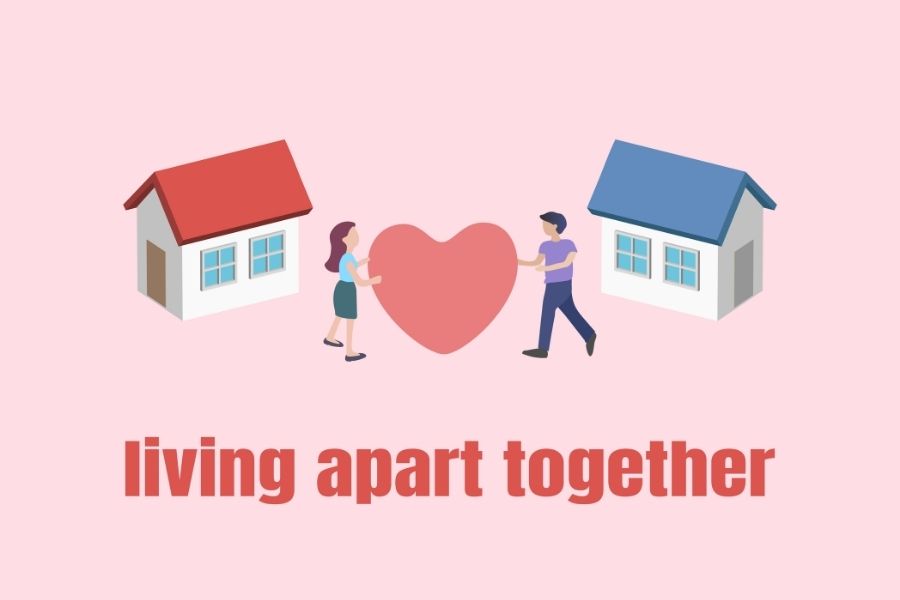When Jayeeta Ghosh married Rajat in 2018, it wasn’t the usual ‘move-in together’ plan after the wedding. A single mother with an 8-year-old son, Jayeeta had her reasons. “We wanted my son to gradually get used to Rajat’s presence. So, we met on weekends, festivals and went on long vacations. For two years, we lived apart,” said the 41-year-old home chef from Kolkata. It wasn’t until 2020 that Rajat moved into her apartment and by then, the transition proved difficult. “Even though I loved him, it was hard to suddenly share my home. I still feel if we had started living together right after marriage, the adjustment would have been smoother.”
Call it modern love, individualism, or just a need for space, the ‘Living Apart Together’ (LAT) arrangement is becoming increasingly common among urban Indian couples. The concept, popular in the West, is being adapted by couples here as a practical solution to career demands, personal preferences and emotional boundaries.
According to Kolkata-based psychologist Aparna Bhattacharjee, the arrangement may begin with mutual understanding, but rarely survives the long haul. “The younger the couple, the more I see this turning into a silent open marriage. They live apart, know they might be seeing others, and still stay married. But what’s missing is the hard work a relationship demands,” she explained.
Aparna pointed out that marriage goes through phases — honeymoon, acceptance, conflict, and maturity. “If you skip the part where you live together, adjust to each other’s flaws and habits, how do you expect the relationship to evolve? Staying apart might delay conflict, but it also delays growth.”
Yet, for some couples, this arrangement has worked — at least for now. Dyuti Banerjee, who got married this May, chose to stay separately from her partner with mutual consent. “We had dated for barely three months before marriage. Living apart has given us time to adjust to the idea of being married, without the overwhelming demand to completely merge our lives overnight,” said the 35-year-old.
She added that having pets at her home and continuing her existing routines have helped her stay grounded. “It’s not that we aren’t committed — we just didn’t want to rush into cohabitation." But Dyuti admitted that the setup isn’t perfect. “Communication gaps do happen. And when we do spend time together, it sometimes feels like we’re guests in each other’s spaces.”

Call it modern love, individualism, or just a need for space, the ‘Living Apart Together’ (LAT) arrangement is becoming increasingly common among urban Indian couples Shutterstock
Soumita Saha, a 32-year-old singer and art therapist, echoes the same complexity in her own LAT experience. She and her husband Agniv married legally in 2021, hoping to avoid societal judgement while travelling together. “We didn’t want people to misinterpret our relationship,” she shared. Initially, the idea was to live apart briefly until a traditional wedding could be planned. But fate intervened — a close relative’s death, the pandemic, and caregiving responsibilities delayed their plans by nearly three years.
“Though we live just 20 minutes apart, the emotional distance can feel heavier than the physical ones. After long days of work, we often miss each other in real time. Sometimes, I just want to walk into the next room and share something small — but I can’t,” said Soumita.
Agniv, on the other hand, feels the absence more deeply. “Every time we part after spending time together, it hurts. I just want us to live under the same roof and not have to say goodbye every time,” he said.
From a psychologist’s lens, Aparna feels this emotional detachment can turn into insecurity. “Long-distance within the same city is still long-distance. You can’t read body language over a call. Misunderstandings become frequent. Doubt creeps in. Why didn’t he answer the phone? Where was she last night? Emotional trust starts eroding slowly.”
She also warns that in such arrangements, external influences, even family, become stronger. “Parents end up taking more space in the marriage than the couple themselves. And when children enter the picture, the confusion magnifies.”
So, is there any merit at all in living apart after marriage?
Aparna believes in short breaks. Long-term separations? Not quite. “A working woman often juggles home and career. A weekend with friends, a solo staycation – these are healthy breaks. But if you are permanently avoiding shared life, what’s the point of marriage? You don’t need a legal paper to validate a long-distance relationship.”
Despite the red flags, the trend reflects a changing social fabric. One that values personal growth and emotional independence. For some, it’s a stepping stone to a wholesome relationship; for others, a crutch to walk towards reality.
Jayeeta said, “The transition wasn’t easy, but it taught us a lot. We could have avoided the shock of suddenly staying together if we had simply started earlier.”
Soumita and Agniv, too, know this arrangement can’t go on forever. “We’re trying to finalise the social rituals and move in soon,” she said. “For me, the legal marriage matters more. But I also understand how much it means to our families — and to him.”
As for Dyuti, she’s still navigating the waters. “It’s unconventional. It’s not perfect. But for now, it works for us.”


